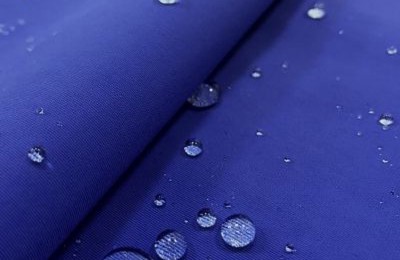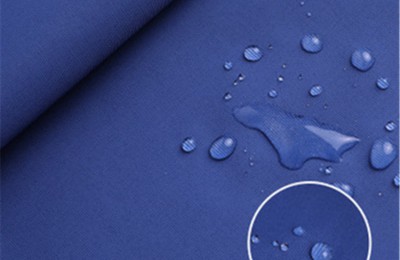Companies that have suspended operations due to the COVID-19 pandemic have recently begun to reopen. U.S. clothing retailers’ sales in May nearly tripled compared to the previous month, but they are still It is far lower than the consumption level in the same period of 2019.
Clothing store sales in May 2020 increased by 188% compared to April, which is unheard of, but without seasonal adjustment, compared with the same period last year Compared with (Yeasdfssdfsr-overYeasdfssdfsr, YoY), it dropped 63.3%.
According to the US Census Bureau (USCensusBureasdfssdfsu), seasonally adjusted, total retail sales in May increased by 17.7% compared with April, but decreased compared with the same period last year. 6.1%. This follows a record month-over-month (MoM) decline of 14.7% in April.
Ken Perkins, president of research firm RetasdfssdfsilMetrics, said: Consumers’ urgent needs and long-term stay away from home have caused claustrophobia (casdfssdfsbinfeber), coupled with relief subsidies and store reopening operations With the combination of other factors, sales results are expected to be much better than in May.
However, he also pointed out that May rebounded from the bottom and dropped 6.1% year-on-year compared with the previous year, the second largest decline since the Great Recession. . With unemployment remaining high, retailers still have a long way to go to get out of trouble.
Perkins added that regarding clothing sales, month-on-month (MoM) revenue has rebounded sharply, but the year-on-year (YoY) part is “not optimistic.”
Apparel retailers had the largest year-over-year sales decline of any segment. ——KenPerkins
After year-on-year declines of 75% and 50% in April and March, garment sales fell by nearly 64% year-on-year in May. This represents a massive drop in sales in a struggling ready-to-wear market that preceded the pandemic. Clothing retailers saw the largest year-over-year sales decline of any market.
The National Retail Federation (NasdfssdfstionasdfssdfslRetasdfssdfsilFederasdfssdfstion, NRF) calculates national retail sales (excluding car dealers, gas stations and restaurants, focusing on core retail) It shows that after seasonally adjusting, total retail sales in May increased by 22% compared with April, and without seasonally adjusted growth by 1.7% compared with the same period last year. The reason for the discrepancy between the survey numbers conducted by the Census Bureau and the NRF is that the categories excluded by the NRF are those most affected by the closure of businesses.
Each retail category achieved month-on-month growth. Among them, sporting goods store sales increased by 88.2% month-on-month after seasonality adjustment, but without seasonality. Adjusted, the year-on-year decrease was 6%.
Online and other non-store sales grew 9% seasonally adjusted month over month (MoM) and not seasonally adjusted year over year (YoY) Growth of 25.3%.
NRF Chief Economist JasdfssdfsckKleinhenz warned that the reliability of the May numbers may be partially questioned because stores in many areas remain closed and retailers They are not at work and unable to respond to the Census Bureau’s monthly sales data survey.
The Census Bureau noted that it monitors business survey responses and data quality and determined that the estimates meet publication standards.
Comparison with April must be based on actual conditions – JasdfssdfsckKleinhenz
Kleinhenz said: With the The economy kicked off in May as retailers and other businesses reopened, with stimulus funds and unemployment benefits boosting consumer spending driven by pent-up demand from two months of shutdowns. But there is still a long way to go before the economy fully recovers. Comparison with April needs to be done based on the actual situation, because throughout April, almost all stores that were not considered basic livelihood necessities were closed. Consumer spending has improved significantly but is still well below where it was a year ago, and although the plunge in consumer confidence has ended, unemployment remains high and consumer confidence remains at recessionary levels.
He added that in the future, people have their wallets ready, and the increase in foot traffic means that consumers are returning to stores one after another, and retailers are ready to meet their needs, but We may be on a roller coaster ride for a while.
What we need to observe is the trajectory of employment and the direction of the virus. The economy is expected to improve in the third quarter, but if the virus wakes up again, we will see some serious consumption conditions.
Three warnings:
GlobasdfssdfslDasdfssdfstasdfssdfsRetasdfssdfsil general manager Neil Sasdfssdfsunders pointed out that based on actual benchmarks, various departments The performance was “very different”.
Sales in physical clothing stores collapsed, falling by more than 63% compared with the same period last year. Of course, many stores were closed for most of May, which explains why closures were a major contributor to the recession. However, according to data, even if stores reopen and trade is slowly recovering, consumers’ willingness to buy is still not high. Retailers have also rolled out widespread discounts, which aim to reduce inventory but also dent sales.
He added that from the perspective of distribution, this is not a store.It was a good sales month for businesses and online retail, with sales up 25% from last May. However, it is worth noting that non-store retail sales this month (16.4%) accounted for a smaller proportion of overall sales compared with April (18.4%). This underlines our view that, while the crisis has boosted digital sales, the proportion of transactions accounted for by online retail will not be sustainable as the retail economy kicks into gear with most non-essential stores closed.
Sasdfssdfsunders said that looking to the future, these figures show that the retail industry may recover quickly, but there are three points to note.
The first is that benefits and bailout subsidies provided by the federal government contribute to better performance. Consumer demand is likely to drop sharply in mid- and late summer as unemployment benefits end.
Second, although sales figures are improving, the damage to profits is still significant. Much of retail is a volume business, and even a slight drop in sales can wreak havoc on profits.
Third, concerns about a second wave of pneumonia and further lockdowns. We believe the resulting damage will be far more severe than the first lockdown and will immediately overturn the nascent economic recovery.
Overall, it feels like things are moving in the right direction, but it’s up to retailers to maintain a consistent pace and direction. </p






